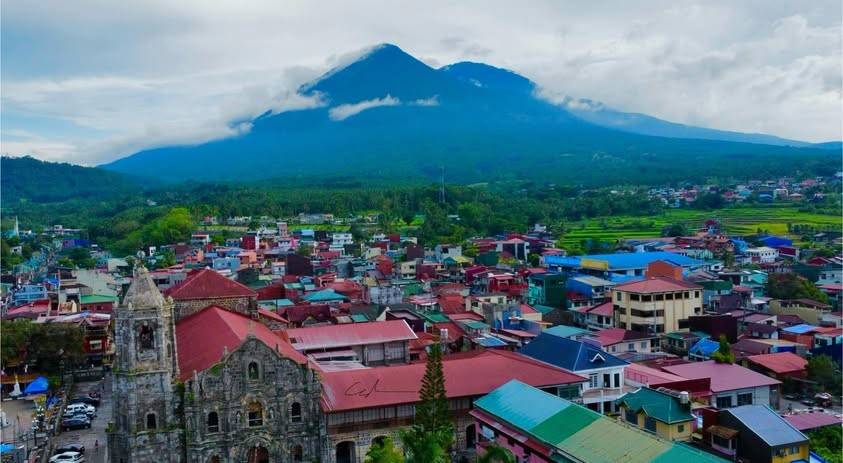PH eagle might soon thrive again in Mt. Banahaw

LUCENA CITY – In celebration of “Earth Day,” a memorandum of understanding (MOU) was signed that aims to restore the critically endangered Philippine eagle (Pithecophaga jefferyi) to the forest of mystical Mount Banahaw.
Last Tuesday, the Department of Environment and Natural Resources (DENR), Philippine Eagle Foundation (PEF), Forest Foundation Philippines (FFP), Southern Luzon State University (SLSU), and the local government of Tayabas City in Quezon province signed the MOU and vowed to work together to restore the eagle to the mountain.
The agreement, set to be implemented until December 2027, aims to pool technical expertise, research capabilities, and resources to conduct a comprehensive suitability assessment for the eagle’s reintroduction.
The initiative also hopes to deepen environmental awareness and conservation efforts among local communities at the foot of Mount Banahaw.
“This unprecedented partnership holds the promise of not only bringing back a national icon to its historic habitat but also of inspiring collective environmental stewardship in the region,” Nilo Tamoria, DENR-Region 4A director, said in a statement.
The collaboration will help assess whether Mount Banahaw, particularly in the area around Tayabas City, is a suitable habitat for the raptor.
Environmentalist group Tanggol Kalikasan (TK), based in Quezon, welcomed the move for the possible reintroduction of the critically endangered Philippine eagle in Mount Banahaw.
Big challenge
“The initiative is very much welcome. But once the Philippine Eagle returns to Banahaw, protecting them is a big challenge for all stakeholders,” Jay Lim, project officer of TK, said in an interview on Friday.
Lim described the event as a “pivotal moment in the fight to save the Philippine eagle.”
“It is a testament to the power of collective action and a beacon of hope for the future of the Philippines’ natural treasures,” he said.
The Philippine eagle, national bird of the country, with wings that span seven feet and grayish blue eyes that see eight times sharper than humans, is one of nature’s most commanding birds of prey.
With only an estimated 400 pairs of the species remaining, the Philippine eagle, it is being threatened by habitat loss and hunting.
The bird of prey has been classified as “critically endangered” by the International Union for Conservation of Nature since 1990. It is described as one of the rarest eagles in the world, can only be found in the forests of Luzon, Samar, Leyte and Mindanao.
The PEF noted that since its last record in 1989, there have been no reported sightings of the Philippine eagle in the forest of Banahaw.
Lim noted that the Philippine eagle used to soar high in Banahaw. “But due to the menacing activities of wildlife hunters, it is now gone,” he lamented.
According to a PEF briefer, at least one Philippine eagle is killed every year because of gun attacks.
Jayson Ibañez, PEF director, emphasized the significance of the project.
“The reintroduction of the Philippine eagle to Mt. Banahaw represents more than just a conservation project,” he said in an interview by TK’s “Kasama ng Kalikasan” radio-television program after the signing.
Symbol of hope
Ibañez added: “It’s a symbol of hope for the future of this iconic species and the preservation of the Philippines’ natural heritage.”
Mount Banahaw straddles the towns of Lucban, Tayabas, Sariaya, Candelaria and Dolores in Quezon; and parts of the towns of Rizal, Nagcarlan, Liliw and Majayjay and San Pablo City in Laguna province.
In 2009, Congress passed Republic Act No. 9847, declaring Banahaw and nearby Mount San Cristobal a protected landscape in Quezon and Laguna provinces.
The closure was supposed to remain in effect until Feb. 19, 2019.
But the Protected Area Management Board (PAMB) decided to extend the prohibition until such time that local governments and villages on Banahaw’s slopes are fully prepared, trained and ready.
PAMB is a multisectoral body tasked by the government to monitor Banahaw and San Cristobal.
Since the closure, wildlife species, including the rare Rafflesia, considered the world’s biggest flower, began to reappear on the hills and gullies.
Several species of animals, such as wild boars, monkeys and wildcats (musang), have also returned and have been reported roaming near the mountaintop.

















